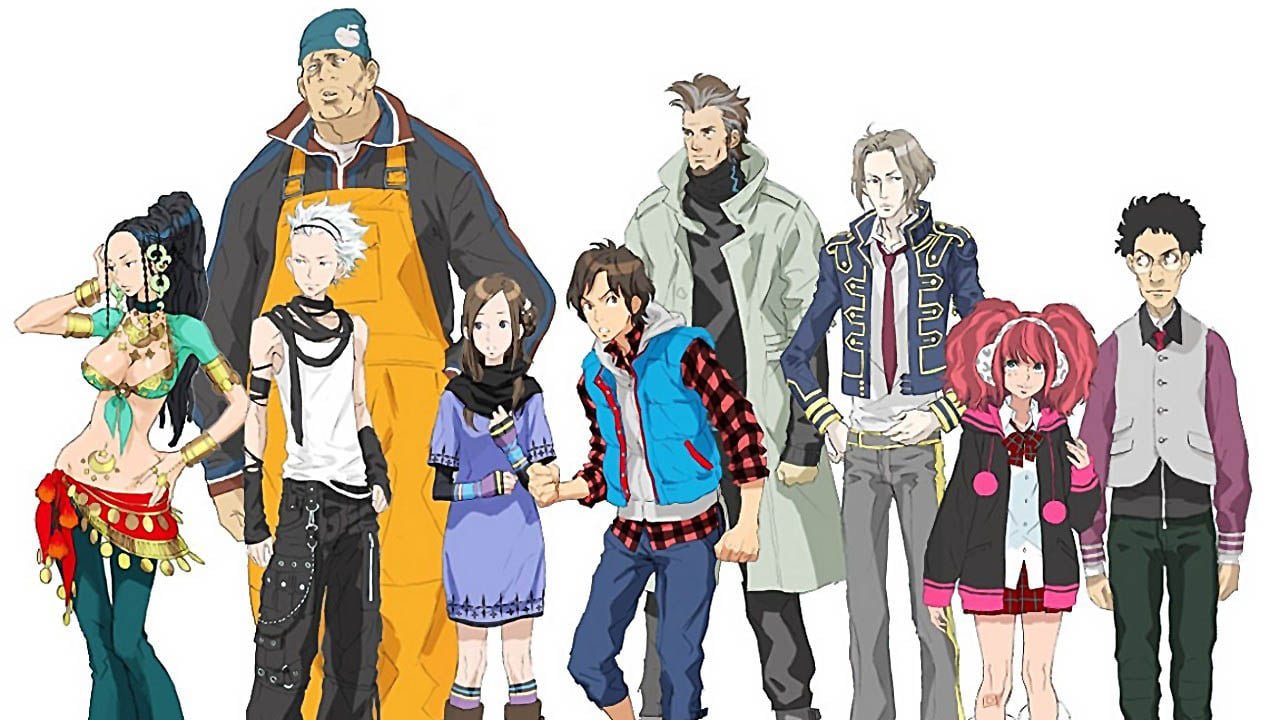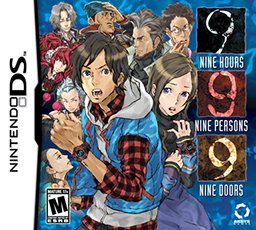The murder novel has also a depressing way of minding its own business, solving its own problems and answering its own questions. There is nothing left to discuss, except whether it was well enough written to be good fiction, and the people who make up the half-million sales wouldn’t know that anyway.
– Raymond Chandler “The Simple Art of Murder”
I have to start this review of 999: Nine Hours, Nine Persons, Nine Doors, the new visual novel for the DS, by drawing attention away from the fact that it’s a visual novel. It’s not that the term is misleading – it is technically correct – it’s just that it isn’t incredibly flattering. Calling it a novel calls to mind, well, novels. It’s most successful elements have nothing to do with its writing. So, can we all agree to lower that expectation? Good.
In 999: Nine Hours, Nine Persons, Nine Doors the new visual (err…umm…) puzzler from Chunsoft, 9 people are stuck on a sinking cruise liner, forced by the mysterious Zero to solve math puzzles before the ship goes down. You follow Junpei. a young college student, as he tries to figure out the puzzles, keep an eye on his fellow shipmates, and maybe figure out what all this is about. Along the way Junpei meets an exotic dancer, a childhood friend, a blind man, an amnesiac and other potential allies and foes.
Most of the game is read, and the premise is interesting enough to keep the plot moving. The manga-style artwork is beautiful, even if most of it is static with occasional small animations. The game doesn’t take advantage of its visuals enough. There are several times when June, a character prone to blushing, is shown trying to hide her reddened face. The text reads, “June blushed, and tried to hide her face.” This is a benign example, but there are several instances where things are overstated or needlessly reiterated. Some of these are understandable – people coming back to the game after days shouldn’t be expected to remember every detail – but there are times when plot developments that just happened are repeated.
Occasionally you’ll be asked to choose dialogue options when talking your fellow captives. These interactive bits feel few and far between, buried under words. After your first playthrough, you’ll be given the option to skip over text you’ve read before, which makes replaying it less tedious.
The interactive parts of the game play like an adventure game. You point the stylus at an item to investigate an area and gain clues. The bottom screen is a 3D view of the room, while the top acts as a topographical view. The puzzles themselves are hinted at strongly, and the objective is never unclear, even if the solution is. The other characters usually provide increasingly pointed hints if you have trouble figuring things out (although sometimes you’ll wonder how so many people seem to have a casual grasp of hexadecimal). Most of the puzzles have a math component, but not in an off-putting way, and this is coming from a fine arts major. Other puzzles tend to focus on item manipulation, which is intuitive. There are a few tough puzzles, but nothing that will keep most players stumped for too long.
There are several points in the game where you’re forced to choose a path. Certain combinations of characters can only go through certain doors. The fact that there are choices in and of themselves isn’t that impressive. I made the choices blind, not really knowing what they entailed aside from which characters would join me, therefore, I might as well have not made any choice at all. Even on my third and fourth playthrough, I wasn’t sure what situations linked to others in an interesting way.
My first playthrough ended with a knife in my back, literally and figuratively (remember what I said about lowered expectations?). This led me to play again, and because the first playthrough didn’t give me enough information to make intelligent choices for which path to take, I received another bad ending. After that, I got another bad ending.
I didn’t mind at all. These bad ending coalesced into something far more interesting than the static “good” ending I eventually reached. The good ending is just a fairly standard mystery novel, with an intriguing, if preposterous, premise, a few puzzles, and little else. The bad endings create the edges of interesting characters. The big scary roughneck is slightly terrifying in one version and endearing in another. By the end of my first botched endings, he was still an enigma, but an enigma in the way everyday people are enigmas. The women were no longer damsels, whores or brats, but people. The bits of information that you do get serve as weird little dead ends, fascinating in what they imply, but never fully reveal. The fact that the central mystery of the game remained a mystery to me during those bad endings was great, because no answer could really satisfy me. As a novel, 999: Nine Hours, Nine Persons, Nine Doors would be utter waste of time, but its structure as a game, and the cumulative knowledge that builds through all those aborted endings ends up making it better than the sum of its parts. Maybe it’s a bad mystery, but it’s also a memorable story.





